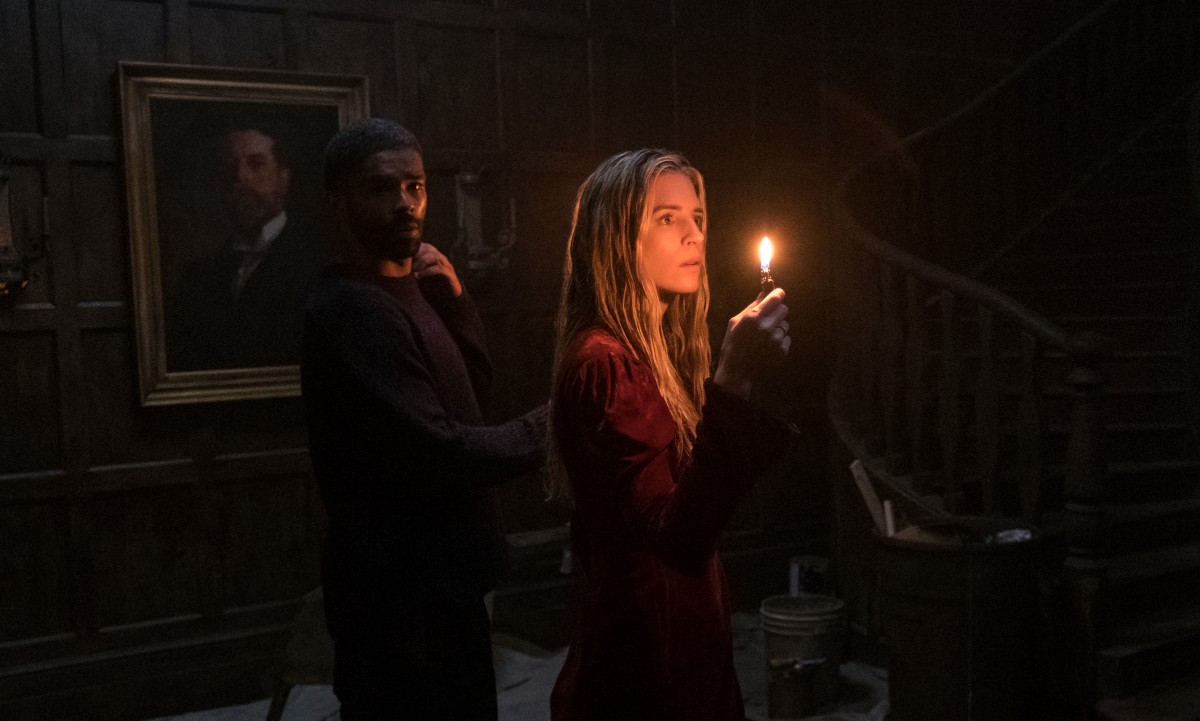Brit Marling and Zal Batmanglij left audiences speechless when they ended the first season of their groundbreaking Netflix sci-fi series, “The OA,” on a cliffhanger. As OA (Marling) is rushed to the hospital after being shot during a visceral, topical school shooting scene, she proclaims to the kids that they succeeded. After the screen cuts to black, we see a bright hospital room, before cutting to black, again, as OAs disembodied voice mumbles, “Homer?”
“The OA” hasn’t lost any creative steam during the over two-year hiatus between seasons. In ‘Part II,’ the narrative scope is wider, the interwoven scientific undertones more ambitious, the character arcs further traversed for richer development while allowing for new ones, the new San Francisco setting utilized impeccably to maximum effect, and Marling and Batmanglij meticulously tie up virtually every loose end from Season 1, while raising a new set of questions to be pondered.
‘Part II’ begins where the first season left off. It worked. OA was telling the truth. She successfully traveled, interdimensionally, into a version of herself if she never stepped onto that bus as a child and remained Nina Azarova in Russia. The catch? She incidentally lands in the same dimension that Hap (Jason Isaacs), or Dr. Hunter Aloysius Percy, and her fellow former captives Scott (Will Brill), Rachel (Sharon Van Etten), and Renata (Paz Vega), traveled to. Hap successfully jumped into Dr. Percy’s body, a famous psychologist doppelgänger in a new dimension, who runs a mental clinic on Treasure Island. The other three jumped into patients of his, but Homer’s (Emory Cohen) soul has traveled to an unknown dimension. Hap uses this newfound fame to continue his research on NDEs and interdimensional travel.
Once OA’s consciousness enters Nina Azarova’s body, her confusion catches the attention of Hap, the mastermind of this dimension. He’s been monitoring the OA doppelgänger closely, and after exercising his celebrity, the underground dynamic in Season 1 is recreated in an entirely new setting. However, this time, Homer, as Dr. Roberts, is on Hap’s side.
Speaking of setting, “The OA” takes the viewer on an immersive tour of San Francisco. Not only the touristy landmarks like Fisherman’s Wharf, but also the less-traveled nooks and crannies of the intimate, 49-square-mile city. The locations scouts did their job so well this season, that the singularity, pun intended, of the setting becomes integral to the plot. Featured in the new setting are the Greenwich street steps in North Beach, the 16th Avenue Tile Steps in Inner Sunset, the Victorian architecture of Nob Hill, breathtaking panoramas of the cityscape, the neon lights of Chinatown, the Cameron House rooftop basketball court with a front-row view of the Transamerica Building, the mansions of Millionaire’s Row in Cow Hollow, the Port of San Francisco, the soaring views of Diamond Heights, and the lush forestry of Muir Woods.
These aren’t merely filler shots. Each location is integral to the story. The 16th Street Tile Steps and a certain abandoned, Victorian mansion in Nob Hill are both locations in a virtual game that has the younger generation in the new dimension hooked like the effect of a devastating craze of a destructive new drug epidemic. The game, nicknamed Q Symphony by its users, referred to as Q-kids, effectively corrupts their minds like a computer virus.
Actor Kingsley Ben-Adir is a great new addition to the cast, as Detective Karim Washington. A level-headed, stoic, and cynical detective tasked with finding a missing Vietnamese teenager named Michelle who was led astray by Q Symphony. Not only is OAs new identity the key to solving Karim’s investigation, but it also links to other important plot pieces.
‘Part II’ of “The OA” incorporates everything that encapsulated the essence of a prestige television of entertainment past. Last season, the breakout musical numbers belonged to Buck’s character. This season, the music supervisor makes interesting use of “Lightning Crashes” by Live and a particularly haunting, foreshadowing inclusion of “I Shall Be Released” by The Band. Weighty themes include expectations versus reality, death as a vehicle for life, life after death, the ramifications of humankind’s pursuit of scientific discovery, and the impermanence of life. “The OA” fully realizes each character arc, uses its setting to maximize the story’s full potential, meticulously crafts its compelling, pertinent dialogue, and packs each frame so dense with detail, that not one second of ‘Part II’s’ more-than-eight-hour runtime seems wasted, expositional, cheap, or unearned. [A]





